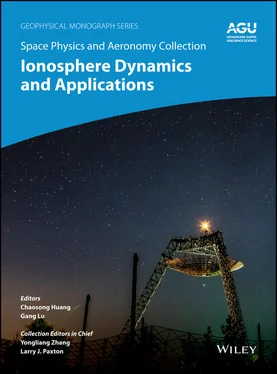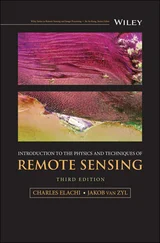1 ...6 7 8 10 11 12 ...49 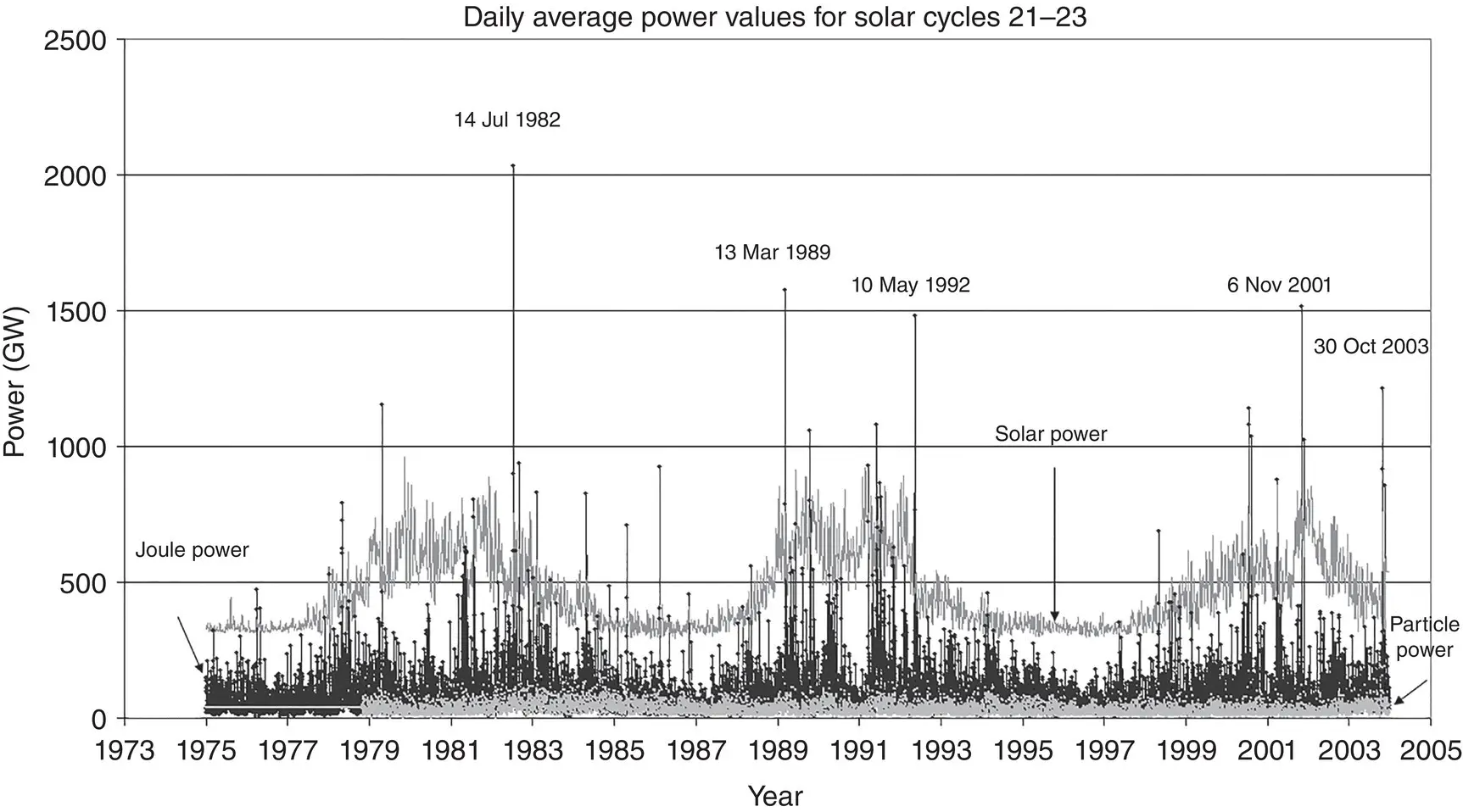
Figure 1.1 Solar power, particle power, and Joule power from 1975–2003
(reproduced from Fig. 4, Knipp et al., 2004. Reproduced with permission of Springer Nature).
From equation (1.2), Joule heat due to dissipation of electromagnetic energy is
(1.4) 
This is equivalent to
(1.5) 
where σ is the conductivity (Banks et al., 1981). Radar measurements of the ion convection determine E . Combining E with models of the conductivity, Q, can be calculated. A comparison of the electromagnetic to particle power shows a ratio ranging from 1 (Brekke, 1976; Banks, 1977) to 4 (Ahn et al., 1983b). In these studies, there is a focus on the auroral zone due to the location of radar observatories, which determine not only E but, to a large extent, σ as well (Ahn et al., 1983a).
A more direct measure of incoming EM power is to calculate the Poynting flux entering the ionosphere, which obviates the need to use a model for conductivity. This was done by Huang and Burke (2004) for a superstorm during which four DMSP spacecraft measured large FACs simultaneous with intense electric fields. It should be noted that the calculation of Poynting flux from DMSP usually uses only the two components of horizontal velocity perpendicular to the ram direction. There is uncertainty in the measured ram velocity and this component is omitted. The estimated EM power over a 20‐minute interval measured by DMSP was approximately 500 GW, comparable with the solar power over the dayside hemisphere shown in Figure 1.1. A second point in our discussion is that while all four DMSP spacecraft crossing the current sheet measured magnetometer deflections of greater than 1,200 nT magnetometers, at conjugate locations on the ground magnetometers measured deflections of the order of a few tens of nT. This point will be discussed in more detail below. It is widely accepted that Poynting flux dominates the total energy input in the IT system during periods of magnetic activity. This was confirmed in a detailed study of the energy budget for a magnetic storm on 5–6 August 2011 (Huang et al., 2014). While particle energy may not be dominant in considerations of total energy deposition, it plays a leading role in energy dissipation via conductivity as shown in equation (1.5).
Ionospheric conductivites are described by Maeda (1977) and in the World Data Center A (Kyoto) website ( http://wdc.kugi.kyoto‐u.ac.jp/ionocond/exp/icexp.html). A number of models of conductivity and conductance have been derived based on particle precipitation (Fuller‐Rowell & Evans, 1987; Wallis & Budzinski, 1981; Spiro et al., 1982; Roble & Ridley, 1987; Hardy et al., 1987; Robinson et al., 1987; Gjerloev & Hoffman, 2000; McGranaghan et al., 2016, & others). Models have also been developed, which are based on UV observations (e.g., Lummerzheim et al.,1991; Coumans et al., 2004), and which account for proton precipitation (Galand & Richmond, 2001; Coumans et al., 2004). The complexity of the conductivity resulting from particle precipitation has been emphasized by McGranaghan et al. (2016), who point out that three‐dimensional spatial variations in even the average precipitation patterns are normal. When temporal variability is added, the task of capturing conductivity accurately becomes even more challenging.
A series of papers by Weimer (1995; 2005) provided an empirical model of EM energy input to the IT system, based on observations of electric and magnetic fields by Dynamics Explorer 2 (DE2). The model represents the high‐latitude (|λ|> 45° MLat) electric potentials as spherical harmonics, which were correlated with measured interplanetary magnetic field (IMF) (Weimer 1995). Examples of the electric potentials in the Northern Hemisphere, shown in Figure 1.2, are generated for solar wind and IMF input by the Weimer (2005) model, hereafter abbreviated as W05. Empirical maps of the FACs were also developed, using scalar magnetic Euler potentials (Weimer, 2001). Figure 1.3illustrates the magnetic Euler potentials for the same solar wind and IMF as in Figure 1.2. A combination of the electric potentials with the FACs from the Euler potentials yields Poynting flux. In steady state, the Poynting flux into the ionosphere is approximately equal to the energy dissipated by Joule heating. This assumes that energy, which is used to generate neutral winds, is negligible, an assumption which may not always be true (Thayer & Semeter, 2004). One of the advantages of this model is that Joule heat can be estimated directly without the need for an estimate of conductivity.
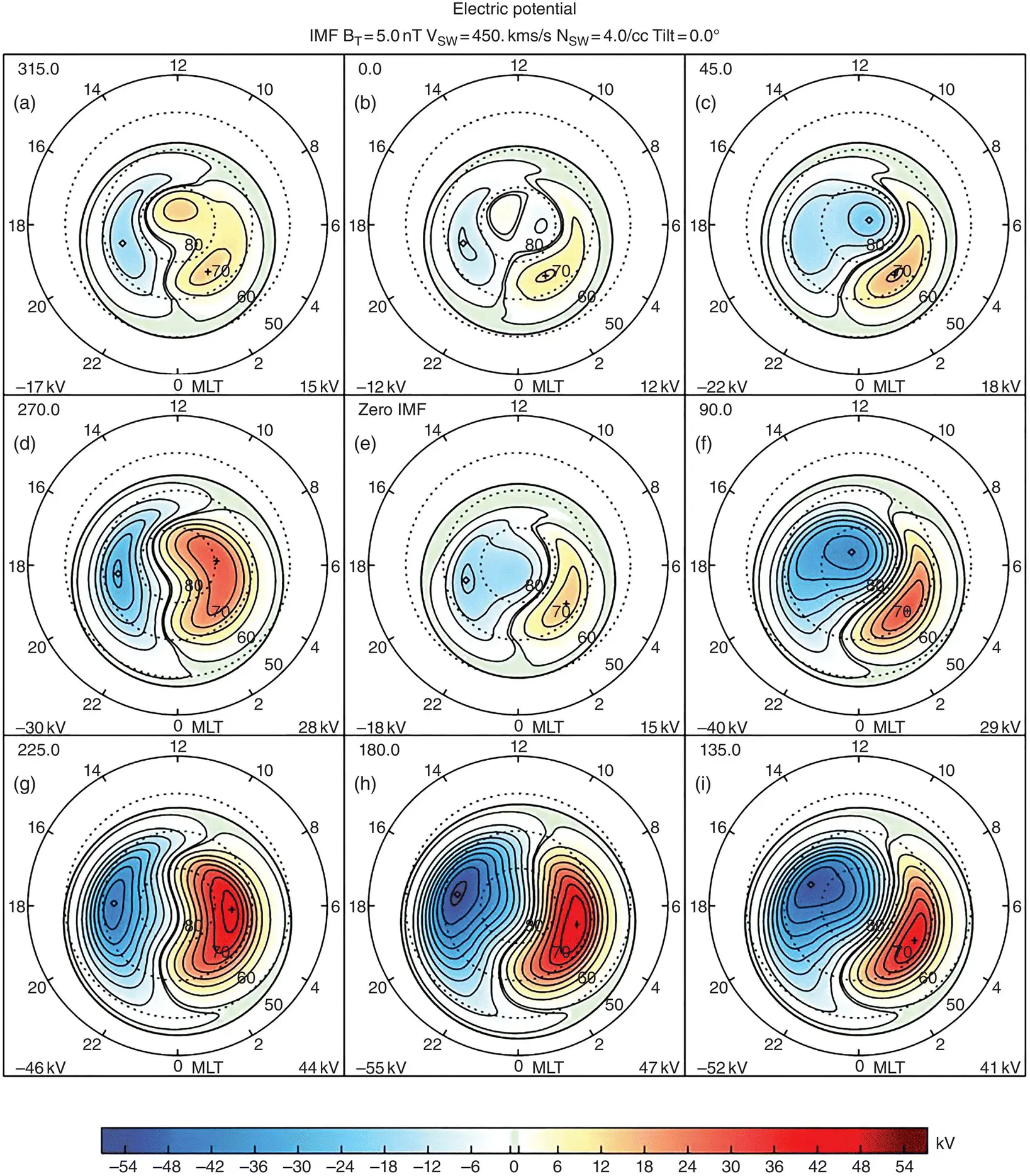
Figure 1.2 (a)–(i) Polar cap electric potentials in the Northern Hemisphere, mapped as a function of AACGM latitude and MLT. Figures (a)–(d) and (f)–(i) show the patterns for eight different clock angle orientations of the IMF vector in the GSM Y‐Z plane; the angle in degrees is indicated in the top left corner of each map. The IMF has a fixed magnitude of 5 nT, the solar wind velocity is 450 km s ‐1, the solar wind number density is 4 cm ‐3, and the dipole tilt angle is 0°. Figure (e) shows the potential for zero IMF, with the same solar wind conditions. Minimum and maximum potential values are printed in the bottom left and right corners of each map, with locations indicated by the diamonds and pluses.
(reproduced from Fig. 2, Weimer et al., 2005. Reproduced with permission of John Wiley & Sons).
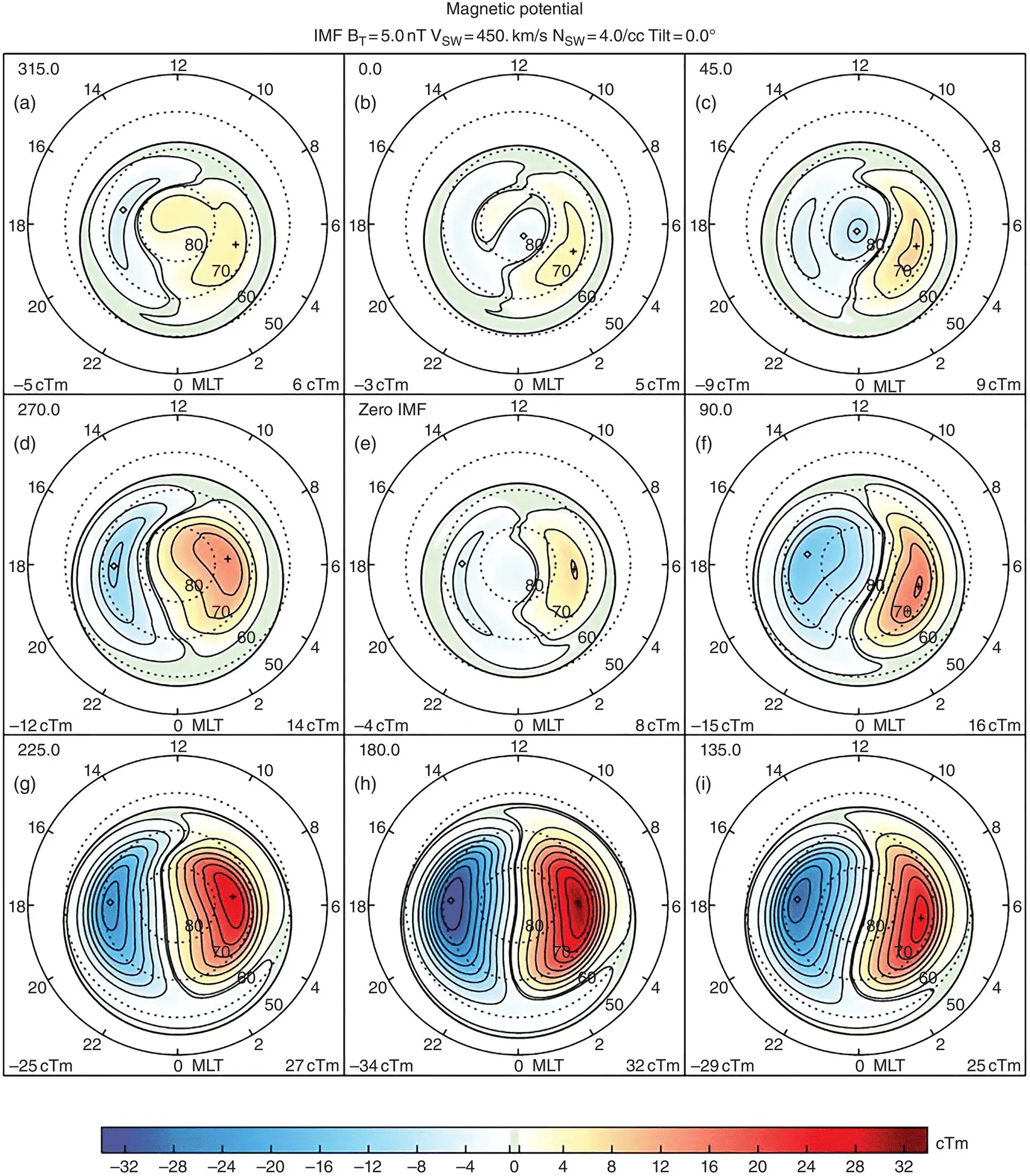
Figure 1.3 (a)–(i) Magnetic Euler potentials in the Northern Hemisphere, mapped as a function of AACGM latitude and MLT. The format and the IMF/solar wind parameters are the same as in Figure 1.2.
(reproduced from Fig. 3, Weimer et al., 2005. Reproduced with permission of John Wiley & Sons).
As in any empirical model, the results are obtained by averaging over observations. In the case of the Weimer model, the observations are obtained from the approximately 18‐month lifetime of the DE2 mission. Despite the sparseness of the original data set, the model has been highly successful in providing high‐latitude electric fields required to model the IT response to magnetospheric energy input. While W05 can be used to specify the Joule heat as a standalone model, the major application of the code is in providing the high‐latitude electric field required by the General Circulation Models (GCMs), which will be discussed below.
The main drawback to W05 is the lack of dynamical behavior inherent during periods of magnetic activity. Empirical models cannot capture the highly fluctuating magnetospheric energy input during storms. This is evident in a comparison of Poynting flux measured along the DMSP orbit with predicted values from the model, as shown in Figure 1.4, reproduced from Figure 10 of Huang et al. (2017a). On the left are shown the estimated values of Poynting flux from the DMSP measurements of cross‐track horizontal velocity and FACs during a magnetic storm, which occurred on 5–6 August 2011. The Northern Hemisphere (NH) is shown above, the Southern Hemisphere (SH) below. Measured values along the orbit track are shown as overplots with the highest value plotted last. On the right are the model predictions of W05 along the same orbital tracks as DMSP plotted in the same way. The highest value of Poynting flux in each panel is indicated at the bottom left of the panel, together with the magnetic latitude (MLat) and magnetic local time (MLT) of the location where that value of Poynting flux occurred.
Читать дальше
